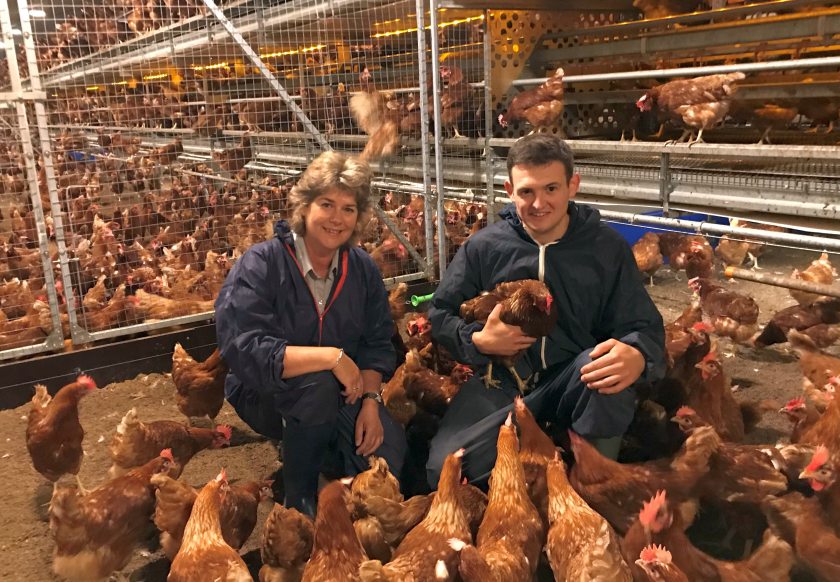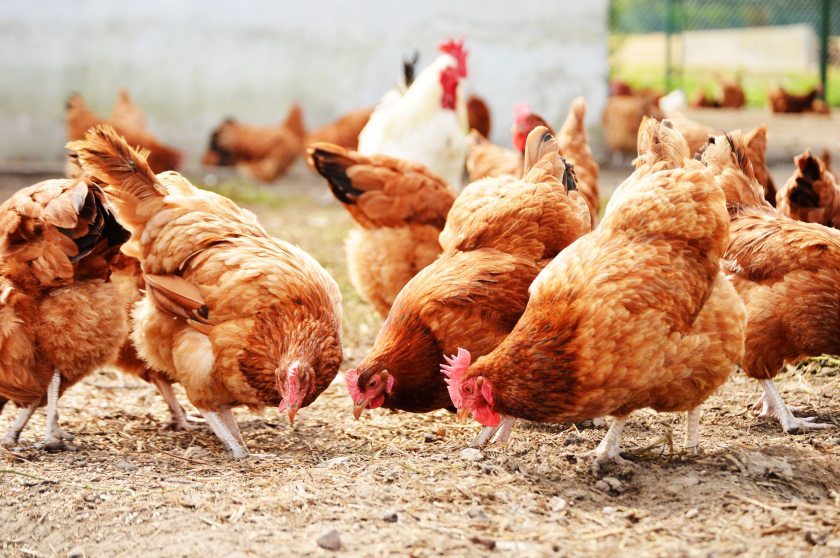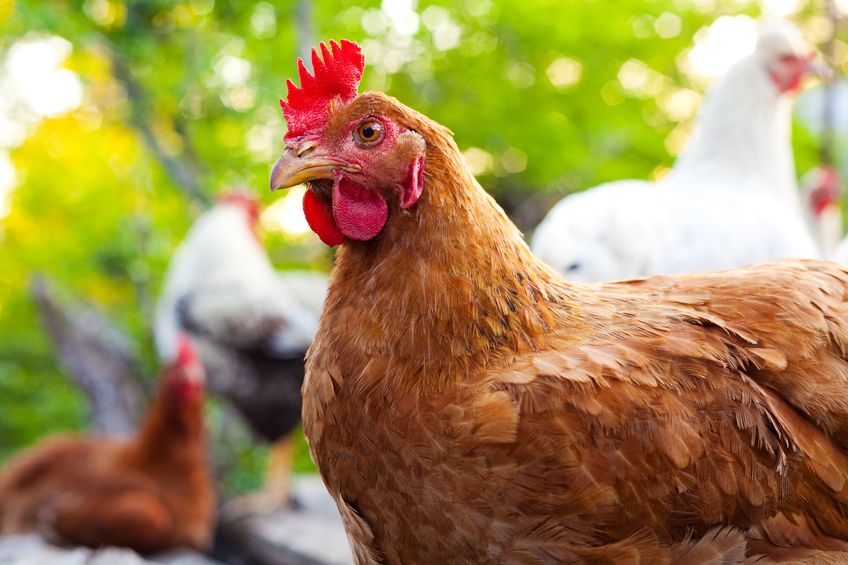
Maintaining feather cover can optimise the performance of an egg producer's flock health and welfare, a poultry expert says.
Full plumage gives an immediate impression of good health in any bird.
However, when your flock loses feathers through stress, illness, or other factors, it is not just their appearance that suffers - you could see your production decline, and susceptibility to challenges can increase.
Growing, and re-growing feathers takes up a significant amount of a bird’s energy, whilst at the same time their physiology is having to work harder to regulate body temperature.
Feathers are essential for keeping both warm and cool. If too hot, then a bird’s appetite is supressed and if too cold its appetite is increased, both affect production, including seconds.
For egg producers, the advantage of maintaining feather cover is clear.
Why do birds lose feather?
Bird feathers are composed of keratin, the same protein that builds human hair and nails. But unlike those structures, bird feathers cannot continually grow and regenerate.
Once the feather reaches full size it will remain in place until it is lost earlier through stress, illness or pecking injuries.
A laying hens’ plumage may not be needed for flight, but it serves as insulation, provides protection from the elements and is the visual sign to the rest of the flock of her social status.
The act of dust-bathing followed by preening enables birds to care for their feathers, optimising protection from sun, rain and each other.
However, as the flock ages natural wear and tear will come into play. In addition, ailing birds do not preen and care for their feathers as effectively, which means they can lose their social status and are picked on.
Feather loss from stress
Like us, birds suffer from stress. Any change in their routine can make them anxious, from sudden changes in lighting conditions to temperature changes, and this can have an immediate impact on their general health.
For example, if pullets find the transition from rear to lay stressful, this can trigger behavioural changes leading to pecking, which in turn can affect production.
Feather loss may be the first indication of such problems, so paying close attention to your birds’ plumage can be an important gauge of the stress levels in the flock.
Pecking injuries
Bored or stressed birds may start to peck at feathers causing feather loss and injury.
Whenever a feather is lost, birds are susceptible to pecking from other birds as the feathers regrow and may even peck at their own newly emerging feathers.
These spiky new feathers contain a blood-filled vein that can become appealing, and once the birds have a taste for it the habit, can be hard to break.
How to avoid feather loss
For Alison Colville-Hyde, Humphrey Feeds & Pullets poultry specialist for the Mid-South West region, preventing, reducing, and managing feather loss is an important part of her role.
“Maintaining feather cover can easily be overlooked until it is too late”, says Alison. “Keeping feathers on the flock will help optimise performance, maintain feed efficiency and prevent other unwelcome issues taking hold.”

Alison advises feeding the bird to its current needs for age and production, plus being very focused on noticing behavioural changes including feather loss.
Understanding the actions you need to take is key to reducing potential, often irreversible damage.
Alison sometimes finds enrichment is a widely used term but not always understood. Often the enrichment provided is more suited to human interpretation rather than what is really suitable for the flock.
Birds need to express foraging behaviour, which is part of their natural instinct, so pecking and interacting with litter, blocks, and fibre all provide this natural behaviour.
Choose your flock diet with care
Since a feather is made up almost entirely from protein, it is important that adequate protein for growth in the pullet, and replacement protein for adult layers, is available in the birds’ feed.
Specialist poultry feed suppliers will help you tune your feed to balanced nutrition, energy and performance level, depending on the age and breed of your flock, so that feather loss is less likely.
If feather pecking is detected, making changes to feed can help mitigate the damage, optimise flock performance and welfare, and therefore your profit.
Humphrey Feeds and Pullets formulates and manufactures hundreds of conventional and organic layer diets.
This enables them to match the individual requirements of the flock, allowing their poultry specialists to target nutritional needs and make small incremental changes which are more likely to be accepted by the birds, rather than huge step changes, which can upset high performing birds.
Reducing stress in your flock
Minimise change: The more stable your birds’ routine, the less stress they will feel. Right from the start, a well-reared pullet is an investment, as every effort will have been made to match the system in rear to the one in your laying house.
All through its life, your flock will be healthier and more productive if any necessary changes to factors such as feed, light and water are made as gently as possible.
Provide stimulation: Aside from providing a consistent and restful environment for your birds, it is widely accepted that providing interactive enrichment features can help stimulate the flock and dissipate stress.
Simply by enriching their environment you can improve both their mental and physical welfare.

The case for pecking blocks
Egg producers are always looking for new innovations to improve flock returns.
Will Ayre, a new egg producer from Shute near Crediton in Devon, has been trialling a new pecking block from B2B Nutrition, part of the Denis Brinicombe Group.
Will has 16,000 Bovan Browns housed in a Big Dutchman 264 multi-tier unit. The birds are fed by Humphrey Feeds & Pullets and supply eggs to St Ewe.
“As a new producer I was keen to keep my flock content, and curb any early signs of feather pecking at any stage of the birds’ life’’ says Will.
Working in partnership with his poultry specialist Alison Colville-Hyde, they decided to trial the pecking block to provide interest and nutrition.
“Avoiding feather loss is such an important topic; anything that successfully assists in keeping feathers on the flock is of interest to optimise performance,” commented Alison.
A variety of block sizes in tubs ranging from 14 to 25kg were made as prototypes and put in place on the scratch areas. Four blocks per 4,000 birds were used.
Some were placed on the bucket lids and others were placed on top of the upturned bucket.
Either way the birds were interested from the moment they were introduced, and continued to peck at them for over ten weeks as they chipped out new shapes, providing stimulation alongside good health.
Flock inspection is key
Producers know that any tools to prevent, reduce and manage feather loss are of value to meet welfare standards and to keep the flock on track to optimise returns.
Pecking blocks, when integrated into a well-managed flock, have benefits in keeping birds’ content and negating the potential issue of the flock starting to feather pull.
They are also effective in reducing the hook at the end of birds’ beaks in flocks with entire beaks.
“Flock inspection is key” says Alison, “being proactive about the flock environment is the best policy and tools such as pecking blocks play a role in maintaining flock health; but you should always speak to your feed supplier or poultry specialist if you spot an issue such as feather loss – we are here to help.”
As for Will Ayres, his flock is now 45 weeks and has no signs of feather loss or damage aside of wear and tear. They are still at 95% production, have a below average mortality and egg size is 50% large.
If you require any further information on any of the issues raised in this article please contact your Humphrey Feeds & Pullets poultry specialist.
